Riddle me this: Someone has “tight” hamstrings, stretches diligently every day for a month, they come back to see you and their 90-90 hamstring test is exactly the same. What gives? Nerve tension is what gives. Nerve tension is more common than most people think, and most people aren’t even aware of it.
What do people even mean when they say that? Did you just dislocate your hip? What the practitioner is referring to is the pelvic bones (left vs right) being slightly misaligned. Furthermore, they are implying if they fix that alignment, then your pain or symptoms will go away.
Many of you might not have any idea what I’m talking about and may never need to know. Diastasis Recti is the separation of the rectus abdominis (the 6 pack muscles). You know that line that goes down the middle of them? Well that gets thinned out and your abdominals get pulled sideways. Yup, that’s right you basically have a big hole in the middle of your stomach.
“Tight” is word you hear everywhere and ALL the time. I hate the word “tight.” When talking about muscles and flexibility and deciding on how to correct a flexibility issue, the word “tight” is useless. Telling me you have “tight” hamstrings does not mean I’m going to jump right in and stretch them. Let me elaborate; I much prefer the words “stiff” or “short.” A stiff muscle indicates there is a lot of resting tension in it. Your stiff muscle may be able to achieve full ROM, but once you start to load things with weight, compensation patterns will start to emerge. A short muscle indicates that it is limited in moving through its full ROM, but the resting tension is within normal limits. Understanding if your muscle is stiff vs. short will go a long way in helping you achieve your desired goals of “less tight hamstrings.”
I had to skip deadlifts this week as much as I wanted to push through them. My sumo pull has a lot of technical flaws and the last time I did this workout, it basically became hyperextensions with 300+ lbs. Needless to say I think it was my lack of self control (checking my ego at the door) that lead to this same workout 2 weeks ago flaring up my back pain.
As with everything in life, I’ve gone through phases in my training career; I’ve made a lot of mistakes; I’ve had a number of achievements. More importantly, I truly believe the sports of weightlifting, powerlifting, crossfit games, strongman, etc. teach you the “intangibles” that everyone is looking for these days. I consistently hear, “working out is my outlet; if I can’t do that, I will get way too stressed out.” That got me thinking, what does weightlifting do for me? As I thought more and more about it, I realized how much it has actually shaped me into the person I am today (pun intended).
I accidentally repeated Day 2 of last weeks microcycle on Tuesday, so I pushed this microcycle's day 2 to Saturday. Overall, I felt really strong this week. My squat is feeling fantastic, and I love how much bench is coming along. If I could get rid of this nagging back ache then my deadlifts would be right up there.
Every now and then I do a workout that has some movements in it that I haven’t done in a while. Every time I do one of those, I’m pretty sore the next day. It got me thinking what exactly is DOMS? Yes, microscopic muscle damage and lactic acid buildup; we’ve all heard that before. Is that really what it is? Am I the only person that thinks about this stuff (you can say yes)? Today I’m going to review what exactly happens during DOMS, down to the physiology (so it will get a little scientific). I will also review strategies laid out to prevent it or decrease it and review the supporting literature.
This week felt really good off of the deload. My back is still bothering me a little so after this block I may be shutting it down again to get rid of the back issues.
Someone asked me the other day, “Why do you arch your back so much during the bench press?” I knew the answer, but it is more complicated than many think. I gave the short answer that it helps keep you stable and lift more weight. That’s not a lie, arching does do that, but there are much more details. Those details are what I will review today.
Gotta love the deload. Definitely came at the right time. When you deload make sure you aren't just taking a break from the lifting portion. Eat really clean, sleep really well, de-stress as much as possible to maximize its effects.
At I got to the end of the program, I found myself saying “ugh I don’t want to do this stupid warm-up.” That’s when I decided to research it and make it purposeful instead of wasting my time. I’m going to share with you the evidence I found and how I took that evidence and put it into a plan for myself and my limitations. Warm-ups are highly variable so this is not meant to tell you what you should do for your warm-up, rather what to consider and how to structure a warm-up based on your limitations.
This week was the time to overreach and push the limits. Tuesday I fell short of 265x8 (shooting for a new 8RM) so I added some sets at the end to make up for it. Wednesday was very tough. I never pull sumo and my hip mobility is horrendous. The first set was mediocre, but the last two sets my form was terrible and I'm still feeling a little ache in my back because of it. I probably had more in the squats, but my back was tweaked a tiny bit from Wednesday so I was hesitant to be aggressive. Next week is the deload and hopefully I can get rid of the back pain so I don't have to break from training.
I discussed mobility for the clean last week (here). Today I will review mobility for the snatch as well as mobility for the jerk. Most of what I covered last week applies today. If you the mobility for a clean, then you should have (or are close to having) enough mobility for the snatch. The notable differences are shoulder range of motion, hip external rotation range of motion, and hip extension range of motion (jerk)/hip flexion range of motion (start of snatch). I will still outline requirements (averages and minimums) of all the major joints, but expect similarities to last week’s article.
This week went much better. My bench endurance sucks, but my squats are progressing nicely. The back is holding up well. Week 3 will be a planned overreach so stay tuned to see how that goes!
Mobility is a huge topic and buzz word in the fitness and health industry these days. As such, every practitioner has a different interpretation of what that means. I define mobility as the elasticity of the joint structures (joint capsule, ligaments, resting tone of musculature) which lead to maximum joint angles or movement combined with the individual’s ability to control such range of motion. The Olympic lifts are some of the most technically demanding movements in the lifting world. Then it comes as no surprise that the mobility requirements for these lifts are extreme. Today I am going to go over mobility in the sense of range of motion (ROM) measured in degrees for all major joints for the clean. I will touch on where you need control, but this article is not attempting to break down technique and teach you how to execute the lift. I am simply putting guidelines on ROM requirements for the lift. I say guidelines because they are exactly that. I will lay out minimal ROMs and ideal ROMs, but every person is different and this is where most people should fall. With the majority of my clients and patients, they struggle to progress the lift or get injured during the lift due to the inability to achieve the optimal position. That inability stems from poor joint mobility which leads to compensations throughout the chain. You can get away with those compensations for some time, but as the weights get heavier and heavier, and you progress to higher levels, the compensations will come back to haunt you.
This was a rough transition. After the first squat day, my legs were done for about 5 days (thus the gap in training). My last program start with 10x5 and it wasn't too bad so I was projecting the same here, but boy was I wrong. Once I got over that initial soreness training was great. The back held up great during my first deadlift session back from injury.
I recently talked with Chad Wesley Smith of Juggernaut training systems (bio here), as well as Paul Oneid of Master Athletic Performance (bio here). That got me thinking about why it took me so long to reach out to these guys. The answer, which now seems absurdly idiotic, was that I thought I had it all figured out. Granted I know I’m not the world’s expert on strength and conditioning, but you know how you get into that mindset.
Last week I finished my 3rd week of Active Rest. Was I ready to get back to heavy weights? Could my back handle it? These were questions I was unsure of so that lead me to a transition week. This week was where I would push the low back rehab to see what it could handle. The goal was to reproduce similar stimuli that I encounter in my training. Those stimuli included heavy compression on the spine, rapid loading of the spine over short time frame, high shear forces on the spine during accessory lifts, load/shear forces on the spine while in extremes of motion (i.e. start of deadlift, bottom of squat, arch during bench).
Last week I discussed the 4 mechanical stressors behind almost everyone’s back pain (see article here). Today I want to discuss how we manipulate them to avoid back pain, and if we end up with back pain, how to manage it and make it go away as fast as humanly possible. With a deeper understanding of the cornerstones and how to manage them, you will be in control of your back health for the rest of your life. By using these principles myself, I have recovered from two separate herniated discs (2013 and 2016) and still gone on to achieve my personal powerlifting goals.




















